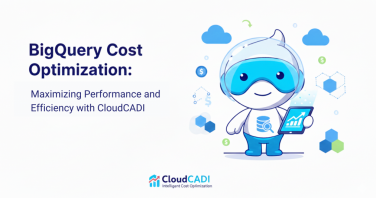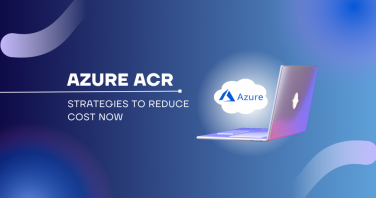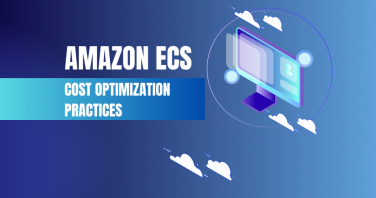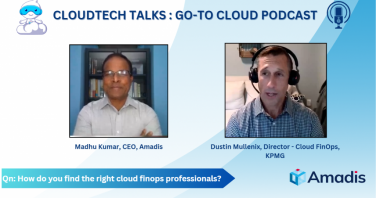Cloud cost optimization is a practice any organization should adopt to ensure they SPEND RIGHT on the cloud. We have discussed what are the benefits of cloud cost optimization in the past. Let’s see what are common challenges in implementing the same and how to overcome them in this article.
Common Cloud Cost Optimization Challenges
While cloud cost optimization offer remarkable benefits, there are number of challenges that organization might face when trying to achieve the optimal savings. To mention a few,
- Lack of visibility into cloud costs : Without proper monitoring and analysis, it can be challenging to identify areas where cost optimization is required.
- Lack of expertise: Many organizations do not have dedicated cloud finops professionals or resources for managing cloud expenses.
- Lack of continuous monitoring: Without consistent monitoring, organizations might miss the opportunities for savings at the right time.
Now let’s see one by one how to overcome these below,
Step 1: Arm them
Every cloud stakeholder should be armed with documents, tutorials, training, guidance, and tools to effectively handle the cloud environment. FinOps products should have the ability to provide graphical representation and reports on cloud usage. Reports should facilitate the stakeholders to dive deep into granular pod level, node level, business unit level, tag level usage, associated cost details, etc.
For example, our product CloudCADI offers reports and trend charts covering parameters like
- CPU utilization
- Memory
- Disk Read
- Disk Write
- Storage Disk Read
- Storage Disk Write
- Network Received
- Network Sent
- Storage
These reports should equip the cloud practitioners with the necessary cost information for effective decisions.
Step 2: Herd them
One of the major challenges the enterprises face is cross-functional transparency. There may be two app development teams developing two different cloud-native applications without knowing that they both use different monitoring tools that satisfy the same purpose. Procurement teams go with a vendor based on the options provided by the cloud teams and better negotiation with the vendor. They have little or no interest in the usage of the tools by diverse teams.
It is crucial to identify these common requirements and consolidate the resources accordingly.
Step 3: Pivot on center
Cloud management is a tricky process. Cloud involves the operations team, finance team, cloud engineers, cloud architects, the procurement team, LoB managers, C-suite executives, etc. conveying a different message. Requirements vary from time to time. Organizations should have a centralized cloud cost optimization/FinOps team to mitigate the differences. Any cloud financial decision like buying new licenses, renewal, going hybrid cloud, etc., before reaching the CXO’s office should pass through the FinOps team’s scan.
After a thorough scanning of real needs and expectations, costs and business value mapping should be carried out. Once it is acknowledged, it should reach the decision maker’s table for approval.
Related Reading: FinOps principles
Step 4: Analyze your cloud
Optimizing starts with analyzing. Review your organization’s cloud usage and spending patterns. This helps to identify the areas that needs restructuring or elimination and develop a targeted cost optimization strategy. You can either do this with a dedicated FinOps team or an effective cloud finops solution like CloudCADI.
Step 5: Retire the unused
There are resources that secretly weigh the cloud bills. Cloud practitioners set up auto-scaling to ensure enough capacity to face the traffic demands and improved cost management. Let’s consider Azure GPU machines. For high-end remote visualization, ML, and deep learning, GPU category, N-series virtual machines are ideal.
They accommodate low latency, high-throughput network interface for graphics or video-intensive workloads. When the engineers miss out on calculating the right number of nodes and configure in excess, the organization ends up paying for these zombie nodes.
For example,
Azure Instance NC12 with 1XK80 GPU offering 12 vCPUs costs $1.8 per hour. Consider 10 such instances counting 120 vCPUs configured but 5 left unused. At the end of the month, you need to pay $13140 instead of $6570 to Azure midst of no accountable benefits.
It is hard to identify these nodes until you address these in the line items of lengthy cloud bills. For larger organizations handling several applications, identification and mitigation go out of manual efforts. Options left with us are to manually plan and closely watch the configuration process, identify the unclaimed assets, and retire (which is not always feasible) or to go with cloud cost optimization products.
Step 6: Leverage services from your CSPs
Cloud Service Providers(CSPs) provide various cost saving options to facilitate clients in saving their cloud investments. Savings plans, discount on bulk scaling, reserved instances are a few options to make use of and realize significant cost savings.
Organizations tend to lose millions when they miss out on optimizing their new workloads along with the previous. Select a FinOps solution that runs along with your vision, each day dragging everything under one umbrella.
Keep optimizing. CloudCADI is with you!
Find this useful? Read Part 2 of Cloud Cost Optimization Steps here.


























